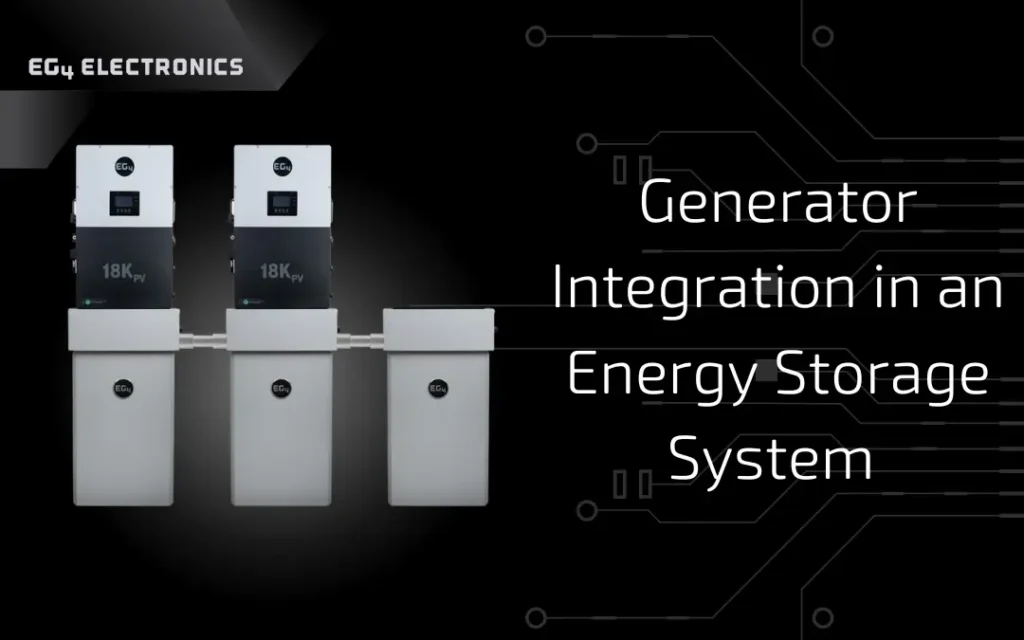Homeowners seeking reliable backup power during extended outages can now integrate a generator into their Energy Storage System (ESS) utilizing an EG4 Electronics 12kPV, 18kPV, 6000XP, or 3000EHV-48 inverters.
The concept behind generator integration is simple yet powerful. In addition to charging your batteries and powering your home with solar energy, inverters with generator integration can make use of a generator when power from your batteries and PV is insufficient. This dual approach ensures continuous power supply, regardless of weather conditions.
While solar energy is a fantastic source of power, it has its limitations. Relying solely on solar panels or batteries for home backup during a power outage can be risky. If an event such as a storm, hurricane, or prolonged cloudy weather occurs, solar panels may not generate enough energy, leaving your batteries partially or fully discharged. Even if you have enough battery storage to completely back up enough energy for all your important appliances, that likely won’t be enough to last for more than a few days.
If you live in an area where grid power isn’t always reliable, integrating a generator into your EG4 ESS may be a great decision. SolarReviews says, “If your area experiences regular blackouts due to extreme weather events, or if you live in a more rural area, then backup power isn’t such a bad idea.”
Benefits of Matching Storage Size to Generator Capacity
When sizing generators, it’s crucial to base the capacity on the highest surge power requirements expected during operation. Surge power – the peak power needed when starting up appliances or equipment – can be significantly higher than a generator’s continuous running wattage.
By sizing the generator according to its surge rating, you can handle peak loads effectively without risk of overloading. This approach not only prevents potential damage or inefficiencies but also ensures reliable performance during high-demand periods. Proper sizing optimizes the generator’s ability to manage sudden surges in power needs, providing stable and dependable energy supply even when power demands fluctuate.
Optimizing Generator Performance
Our inverters’ Generator Boost (or GenBoost) allows the generator to handle most of the load, and if the generator’s capacity is exceeded, the solar panels and battery can assist. EG4’s ESS charge current limit determines how much power the system can handle, while the charge voltage is based on the battery’s requirements. For example, if the generator is set to 5kW and your load exceeds that, the solar panels and battery can help provide additional power.
Additionally, the State of Charge (SOC) helps monitor battery levels against voltage, while the generator’s rated power indicates its continuous running wattage. To prevent damage, the generator includes a cooldown time setting, allowing it to run for a few minutes to cool down before shutting off. This ensures that if the SOC reaches a certain level, the generator can continue running briefly, avoiding an abrupt stop which can be problematic for many generators.
Furthermore, if your generator has dry contacts, you can initiate the start of your generator based on the SOC or voltage of your batteries.
Benefits of EG4 Inverters with Integrated Generators
In these situations, having a backup generator is crucial. With a generator integrated into your system, you can still maintain essential functions in your home. For more information about how each of EG4’s inverters can be set up with generators, look at the manuals for the 12kPV, 18kPV, 6000XP, and 3000 EHV-48.

